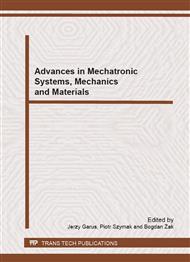p.51
p.62
p.74
p.82
p.88
p.95
p.102
p.109
p.117
The Fluctuational Model of Small Floating Objects Identification by Means of Passive Radar Reflectors
Abstract:
The paper presents the issues related to the probability of surface objects detection. The classical fluctuation models and the new fluctuation model for small floating objects with 10 m2 radar cross section surface are described. The possibilities of detection of examined passive radar reflectors by the radars on board merchant vessels were determined. Probability of detection of passive radar reflectors calculated using the classical fluctuation models was compared with the results obtained using the proposed new fluctuation model.
Info:
Periodical:
Pages:
88-94
Citation:
Online since:
February 2013
Authors:
Price:
Сopyright:
© 2013 Trans Tech Publications Ltd. All Rights Reserved
Share:
Citation:


